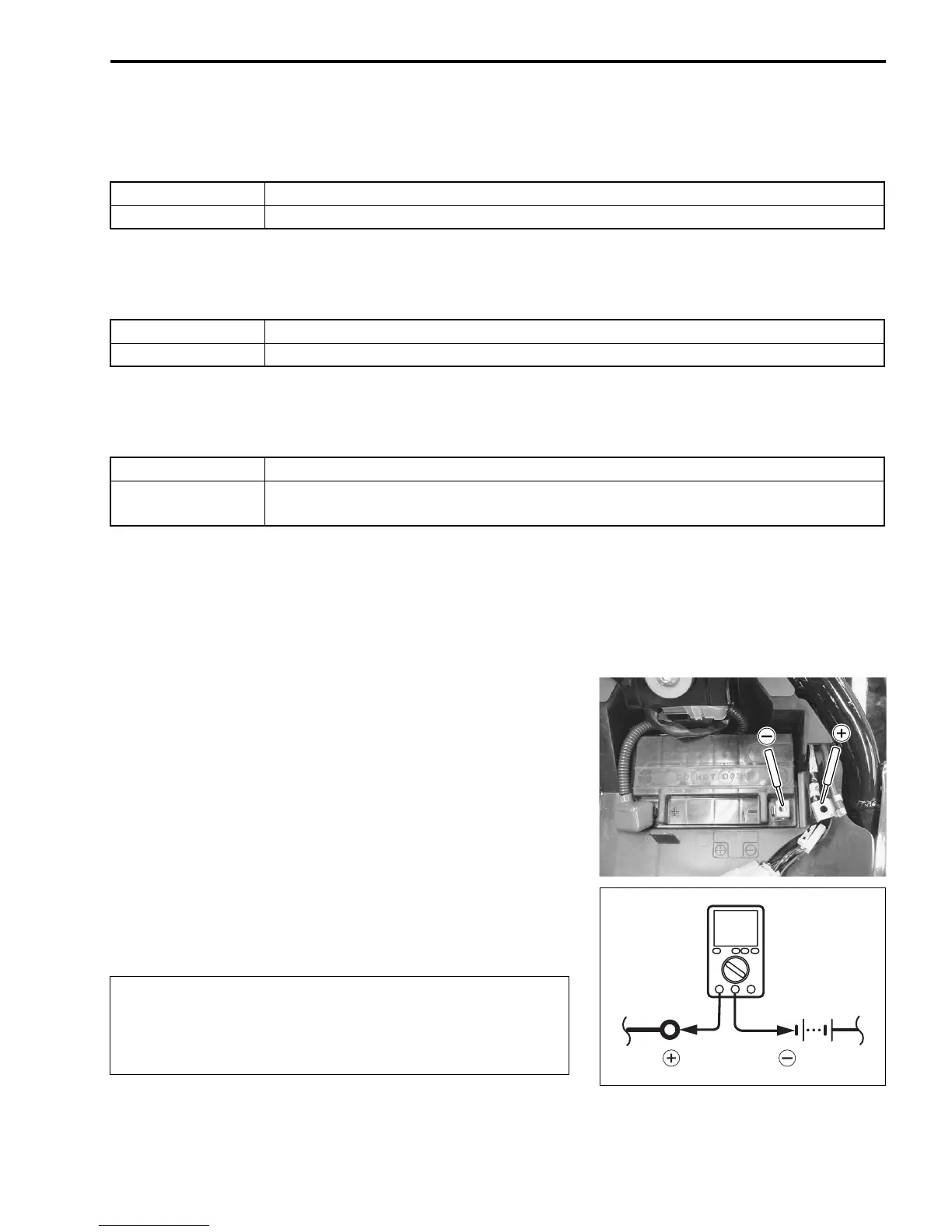ELECTRICAL SYSTEM 9-9
Step 5
1) Measure the generator no-load voltage. (9-11)
Is the generator no-load voltage OK?
Step 6
1) Inspect the regulator/rectifier. (9-11)
Is the regulator/rectifier OK?
Step 7
1) Inspect wirings.
Is the wirings OK?
Battery overcharges
• Faulty regulator/rectifier
• Faulty battery
• Poor contact of generator lead wire coupler
INSPECTION
BATTERY CURRENT LEAKAGE
• Remove the seat. (8-3)
• Turn the ignition switch to the OFF position.
• Disconnect the battery - lead wire.
Measure the current between - battery terminal and the - bat-
tery lead wire using the multi circuit tester. If the reading
exceeds the specified value, leakage is evident.
Battery current (leak): Under 1 mA
09900-25008: Multi circuit tester set
Tester knob indication: Current (, 20 mA)
When checking for excessive current leakage, remove the cou-
plers and connectors, one by one, so as to locate the position of
trouble.
YES Go to Step 6.
NO Faulty generator
YES Go to Step 7.
NO Faulty regulator/rectifier
YES Faulty battery
NO
• Short circuit of wire harness
• Poor contact of couplers
* Because the current leak might be large, turn the
tester to high range first to avoid tester damage.
* Do not turn the ignition switch to the “ON” position
when measuring current.
DCmA
Battery
SAMPLE

